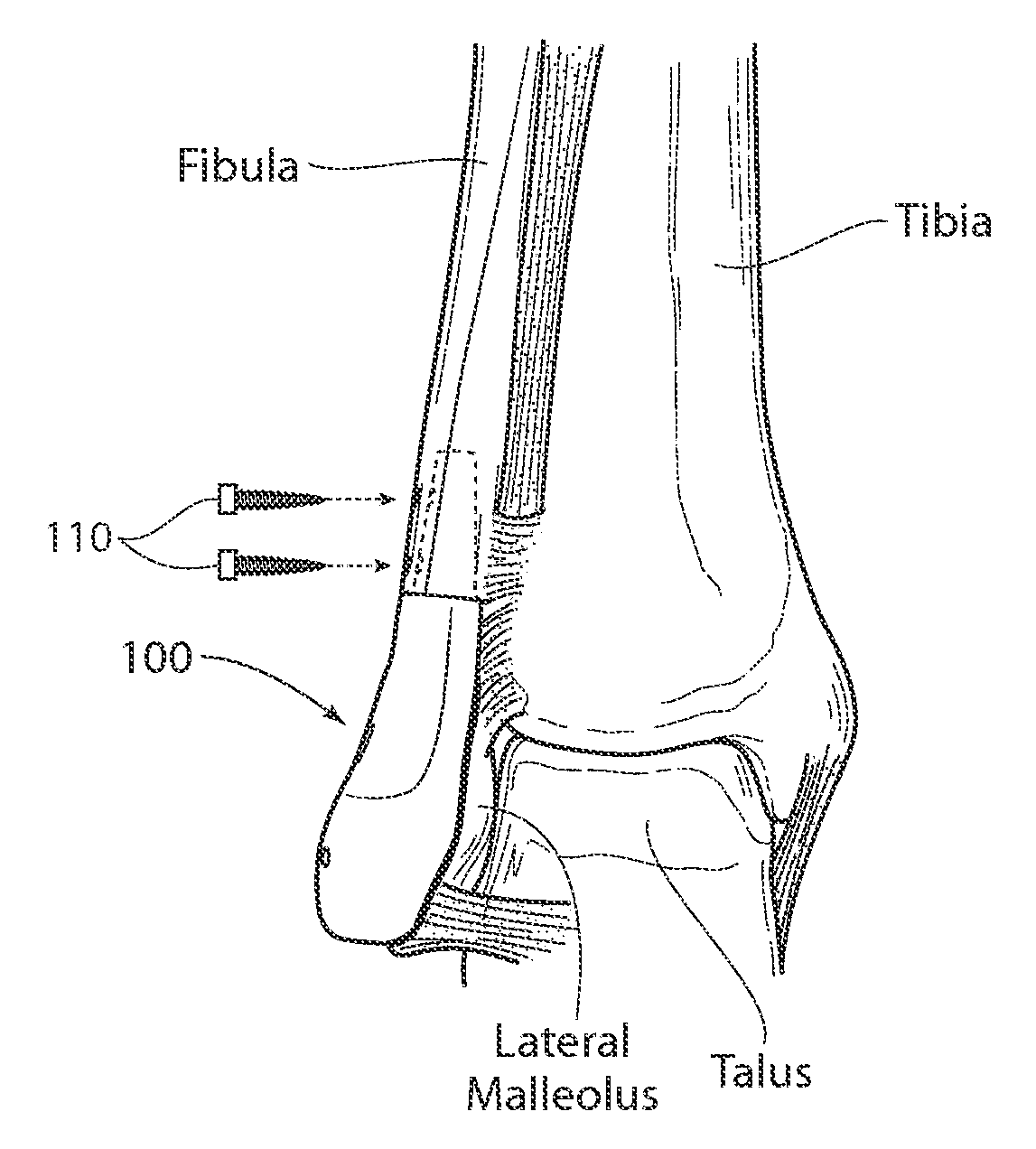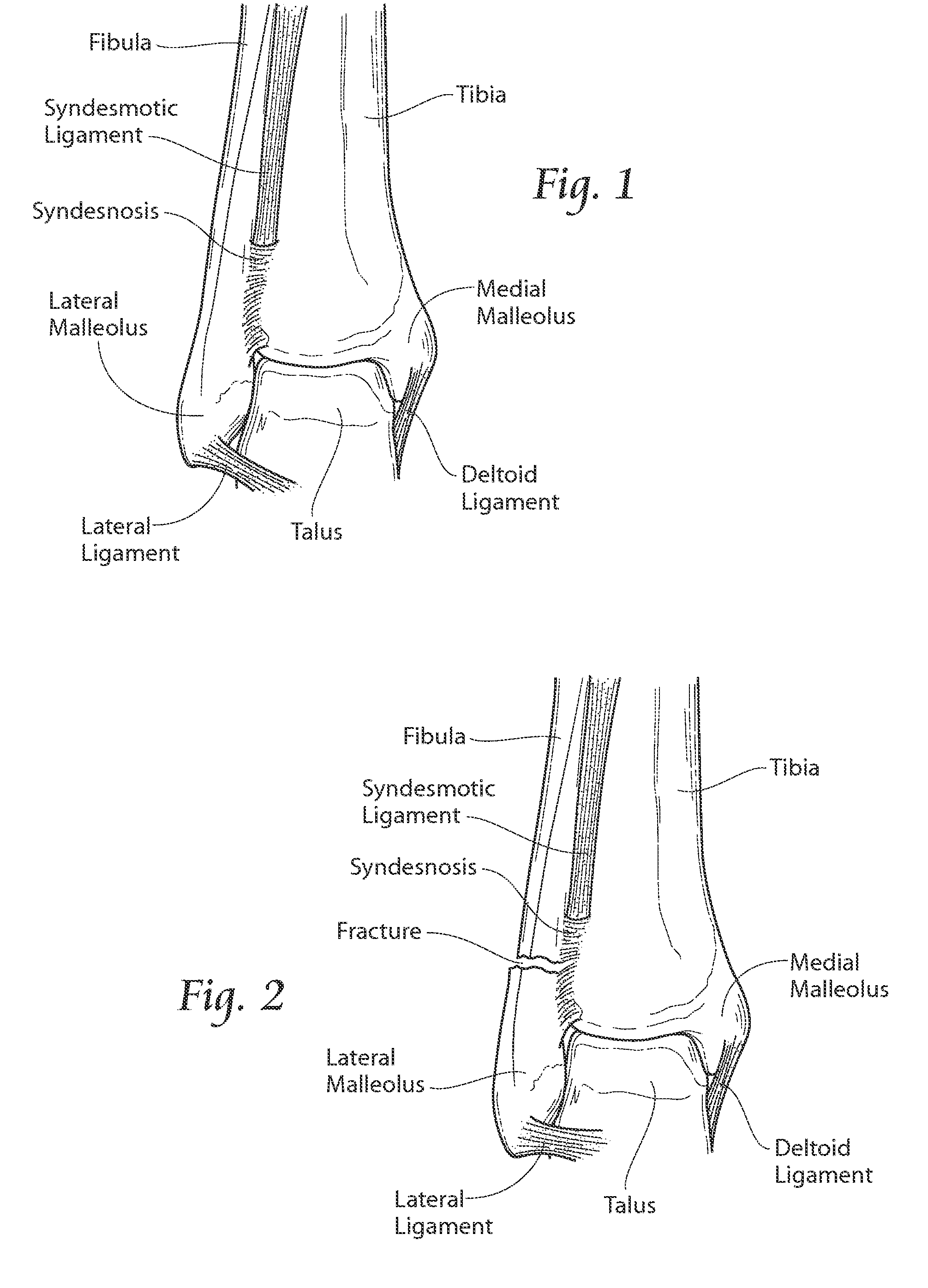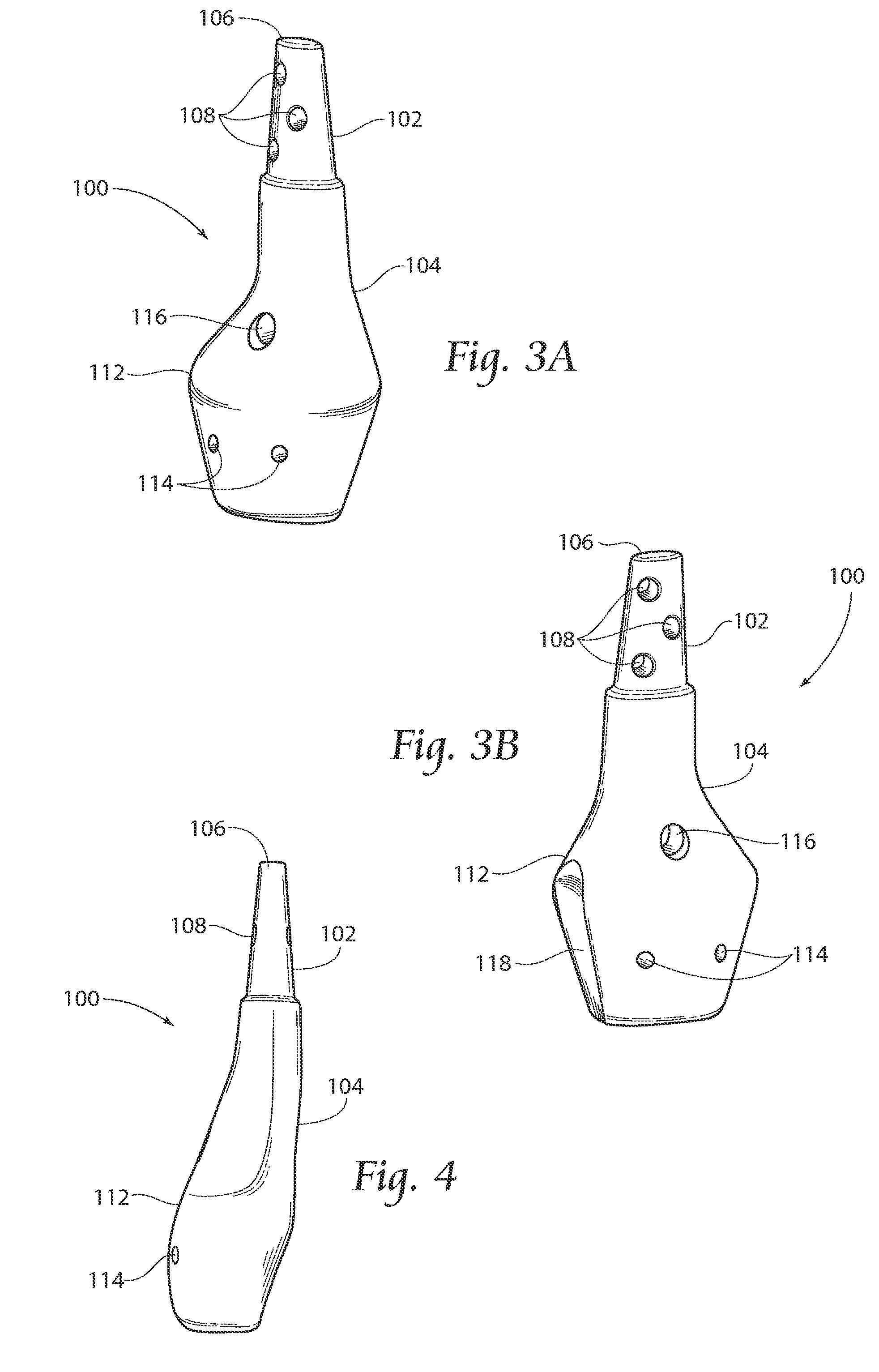Malleolar replacement devices
a technology for ankle joint replacement and mallodal replacement, which is applied in the field of intramedullary ankle joint replacement, can solve the problems of limited use, increased stress on the knee and hip joints, and poor prognosis after fractur
- Summary
- Abstract
- Description
- Claims
- Application Information
AI Technical Summary
Benefits of technology
Problems solved by technology
Method used
Image
Examples
Embodiment Construction
[0029]Although the disclosure hereof is detailed and exact to enable those skilled in the art to practice the invention, the physical embodiments herein disclosed merely exemplify the invention which may be embodied in other specific structures. While the preferred embodiment has been described, the details may be changed without departing from the invention, which is defined by the claims.
[0030]FIG. 1 depicts a normal ankle joint, free of fracture. The ankle generally consists of the distal ends of the fibula and tibia bones, which are connected to the talus bone. The fibula bone comprises the lateral malleolus, which is connected to the talus by way of the lateral ligament. The tibia bone comprises the medial malleolus, which is connected to the talus by way of the deltoid ligament. The tibia and fibula are connected two one another by way of the syndesmotic ligament.
[0031]If undue stress is put on the ankle joint, the joint may fracture, with either the fibula or tibia fracturing...
PUM
 Login to View More
Login to View More Abstract
Description
Claims
Application Information
 Login to View More
Login to View More - R&D
- Intellectual Property
- Life Sciences
- Materials
- Tech Scout
- Unparalleled Data Quality
- Higher Quality Content
- 60% Fewer Hallucinations
Browse by: Latest US Patents, China's latest patents, Technical Efficacy Thesaurus, Application Domain, Technology Topic, Popular Technical Reports.
© 2025 PatSnap. All rights reserved.Legal|Privacy policy|Modern Slavery Act Transparency Statement|Sitemap|About US| Contact US: help@patsnap.com



